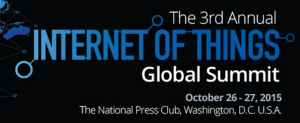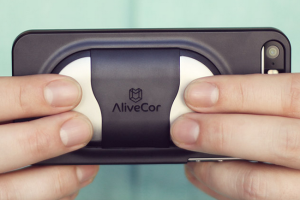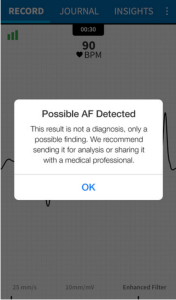This just in: your Internet of Things strategy will fail unless you make data privacy and security the absolute highest priority.
I didn’t always think that way.
Long-time readers know one of my favorite themes is what I call the IoT “Essential Truths,” the key priorities and attitudinal shifts that must be at the heart of all IoT strategies. I’ve always ranked privacy and security the last on the list:
- Share Data (instead of hoarding it, as in the past)
- Close the Loop (feed that data back so there are no loose ends, and devices become self-regulating:
- Redesign Products so they will contain sensors to feed back data about the products’ real-time status, and/or can now be marketed not as products that are simply sold, but services that both provide additional benefits to customers while also creating new revenue streams for the manufacturer.
- Make Privacy and Security the Highest Priority, because of the dangers to customers if personal or corporate data becomes available, and because loss of trust will undermine the IoT.
No longer.
I’ve reversed the order: privacy & security must be the precondition for anything else you do with the IoT, because their absence can undermine all your creativity.

Newsweek article about Shodan
The specific incident that sparked this reordering of priorities was a recent spate of articles about how Shodan (in mid-2013 I blogged about the dangers of having IoT data show up there — did you pay attention??) — the “search engine for the Internet of Things” — had recently added a new feature that makes it easy-peasy to search unsecured webcams for video of everything from sleeping babies to marijuana farms. According to CNBC:
“‘Shodan has started to grab screenshots for various services where the existing text information didn’t provide much information,’ founder John Matherly wrote in an email. ‘This was launched in August 2015 and the various sources for screenshots have expanded since then — one of those recent additions is for webcams.'”
I’ve written before that I feel particularly strongly about this issue because, unlike engineers who are hell-bent on getting their IoT products and services to market ASAP and at as little cost as possible, I have an extensive background before my IoT days as a crisis management consultant to Fortune 100 companies that had screwed up big time, l0st public trust, and now had to earn it back. As a result, I see IoT privacy and security threats differently.
As I’ve said, a lot of engineers — as left-brained and analytical as I am right-brained and intuitive — simply don’t understand factors such as the fear parents feel when their sleeping babies can be seen anywhere and creeps can yell obscenities at them. After all, fear isn’t factual, its emotional. However, that can no longer be an excuse.
No more Mr. Nice Guy! you must make privacy and security a priority on the first day you brainstorm your new IoT product or service, or you risk losing everything.
As cyber-security expert Paul Roberts says:
“The Internet of Things means that the impact of cyber attacks will now be felt in the physical world and the cost of failing to security IoT endpoints could be measured in human lives, not simply zeroes and ones.“Like any land grab, the rush to own a piece of the Internet of Things is chaotic and characterized by the trampling of more than a few treasured and valued principles: privacy, security, accountability. As companies clamor to develop the next Nest Thermostat or simply to whitewash aging gear with a web interface and companion mobile app, they’re conveniently forgetting the lessons of the past two decades.”
“the principle of data protection by design requires data protection to be embedded within the entire life cycle of the technology, from the very early design stage, right through to its ultimate deployment, use and final disposal. This should also include the responsibility for the products and services used by the controller or processor….
- “limit the risk that Internet of Things devices are deemed not compliant with privacy laws avoiding sanctions that under the new EU Privacy Regulation will reach 5% of the global turnover;
- reducing the potential liabilities deriving from cybercrimes since data breaches have to be reported to privacy regulators only if the data controller is unable to prove to have adopted the security measures adequate to the data processing and
- exclude liabilities in case of processing of data that are not necessary for the provision of the service also through the usage of anonymization techniques which is relevant especially for B2B suppliers that have no relationship with final users.”
Privacy and security are never-ending requirements for the IoT, because the threats will continue to evolve. Making it a priority from the beginning will reduce the challenge.
I’ll speak on this subject at SAP’s IoT 2016 Conference, Feb. 16-19, in Las Vegas.





